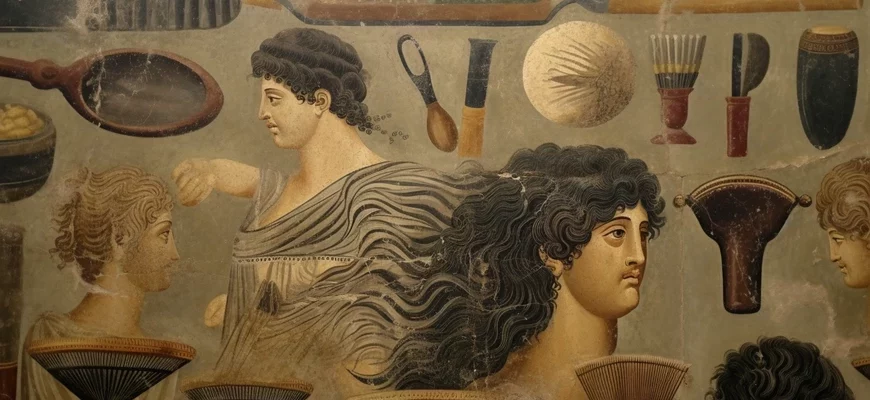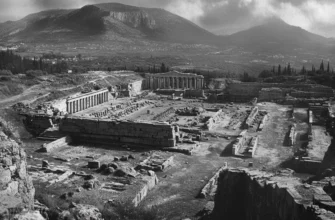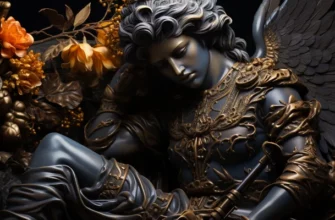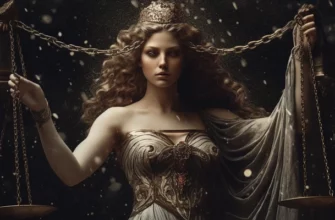Hairdressing in ancient Greece had a significant influence on culture and fashion. The history of hairdressing in Greece began about 4,000 years ago, when women used hair as a material for decorations and rituals. In the 7th century BC, hairdressing became popular in Greece, and in the 5th century BC, wigs became a common element of women’s clothing. The evolution of hairdressing in Greece spans various eras, including the classical period, when complex and elaborate hairstyles using natural hair and wigs were popular. Wigs were also used in theater and competitions. The influence of hairdressing on culture and fashion in Greece was evident in sculpture, painting, and literature, where hair often symbolized beauty and youth.
- The importance of hairdressing in ancient Greece
- The history of hairdressing in ancient Greece
- The origins of hairdressing in ancient Greece
- Hairstyles during the classical period
- The evolution of hairdressing in ancient Greece
- The development of hairdressing from antiquity to the Hellenistic period
- The influence of social and cultural changes on hairdressing
- The influence of hairdressing on culture and fashion in ancient Greece
- Wigs as an integral part of women’s and men’s clothing
- The influence of hairdressing on the formation of culture and fashion in ancient Greece
- Conclusion
The importance of hairdressing in ancient Greece
Hairdressing in ancient Greece was of great importance as an element of culture and fashion. Hairstyles and wigs were an integral part of ancient Greek society, reflecting the social status and style of their owner. In addition, hairdressing was important in religious and ceremonial practices, as well as in theatrical performances. Therefore, the development of hairdressing was not only an aesthetic but also a cultural and social phenomenon in ancient Greece.
The history of hairdressing in ancient Greece
The history of hairdressing in ancient Greece began in ancient times, when women used hair as a material for decorations and rituals. In the 7th century BC, hairdressing became popular in Greece, and in the 5th century BC, wigs became a common element of women’s clothing. During the classical period, hairdressing developed more and more and became an increasingly important element of culture and fashion in Greece. From that time on, wigs became sophisticated and complex and were used for various hairstyles. Wigs were also used in theater and competitions.
The origins of hairdressing in ancient Greece
The history of hairdressing in ancient Greece has come down to us from ancient times. Hairdressing appeared in Greece as early as the 5th century BC and has since become an integral part of its culture and traditions. Initially, hairstyles and wigs were used only in a few upper circles of society, but over time they became available to a wider audience. Hairdressing in Greece was an important element of culture and style that was preserved and developed over many centuries.
Early hairstyles and trends In ancient Greece, hairdressing and hairstyles were an important part of culture and style. Early hairstyles were simple and practical, using a few simple techniques. However, over time, new trends and styles began to develop, such as intricate braids, curls, and frizzy hairstyles. Many of these styles became symbols of wealth and luxury, ensuring their popularity among the upper echelons of society. At the beginning of the 5th century BC, some hairdressers began to use perfumes and various decorations to give hairstyles more luxury and elegance.
Hairstyles during the classical period
During the classical period in Greece, hairstyles became more complex and sophisticated. High hairstyles with multi-layered curls, often decorated with flowers and other ornaments, were popular among women. Men usually wore their hair short, but also began to follow fashion trends by combing their hair back or high on their heads. Many of these styles were reflected in Greek art, where women with high hairstyles and men with elegant hairstyles can be seen. In addition, in classical Greece, hairdressers began to use a variety of products to dye hair and give it extra shine and volume.
The evolution of hairdressing in ancient Greece
The evolution of hairdressing in ancient Greece spans various eras and styles. In the classical period, which lasted from the 5th to the 4th century BC, wigs became a common element of women’s clothing and became increasingly complex and sophisticated. Later, in the Hellenistic period, long hairstyles were popular, which were twisted into intricate knots and locks. In the Roman era that followed, wigs were used as a sign of social status. Also during this period, hairdressing developed as a profession, and hairdressing schools were established. Over time, hairdressing continued to develop and evolve in line with fashion trends and social changes.
The development of hairdressing from antiquity to the Hellenistic period
During the Hellenistic period, hairdressing in Greece reached its peak. Hairdressers began to use new techniques and tools to create more complex and experimental hairstyles. Women’s hair became longer, and hairdressers used it to create intricate hairstyles with braids and plaits, adding decorations such as wreaths, crowns, and necklaces. Men were not far behind, wearing more elaborate hairstyles that included high forelocks, intricate curls, and colorful strands.
This period also saw the emergence of new hair dyeing techniques that allowed for brighter and more saturated colors. In addition, hair salons appeared during this period, where hairdressers could provide not only hairstyling services but also hair care. At this time, hairdressing became not only a part of fashion but also an important element of cultural life in Greece.
The influence of social and cultural changes on hairdressing
Scientific research shows that the social and cultural changes that took place in ancient Greece had a significant impact on hairdressing. For example, the shift towards simpler hairstyles and the abandonment of wigs in the 5th century BC led to the development of more complex techniques and hair treatments. In addition, changes in the social structure and the increased status of women in society led to an increase in demand for hairdressing services, which in turn led to the development of the hairdressing profession and the expansion of its functions.
The influence of hairdressing on culture and fashion in ancient Greece
Hairdressing had a significant influence on culture and fashion in ancient Greece. In the classical period, wigs became a common element of women’s clothing and were often used to create complex and sophisticated hairstyles. At the same time, men also used wigs, especially in the theater, to convey characters and create different images. Hairdressing was also associated with religious and ritual practices, where hair was used to create wreaths and decorations. All these factors contributed to the formation of culture and fashion in ancient Greece.
Wigs as an integral part of women’s and men’s clothing
In ancient Greece, wigs were an integral part of women’s and men’s clothing. Women decorated their hair with intricate hairstyles and used wigs to create a more sophisticated look. Men also often used wigs to correct imperfections in their appearance and create a more attractive image. Over time, wigs became a symbol of luxury and wealth, and their variety and sophistication became an important element of fashion and culture in ancient Greece.
The influence of hairdressing on the formation of culture and fashion in ancient Greece
Hairdressing in ancient Greece was of great importance to the culture and fashion of the time. Hairstyles and wigs reflected a person’s status and social standing and were also an important part of theatrical performances and religious ceremonies. Hair styling was a traditional part of beauty in Greece and influenced subsequent eras of fashion and culture.
Conclusion
The development of hairdressing in ancient Greece was extremely important for the culture and fashion of the civilization. This art evolved over the centuries, changing and adapting to fashion trends and social changes. Wigs became an integral part of women’s and men’s clothing and were also associated with religious and ritual practices. The development of hairdressing contributed to the formation of culture and fashion in ancient Greece, and its influence can still be felt today.
The art of hairdressing in ancient Greece has enormous historical and cultural significance. Its evolution took place over many centuries and reflected social and cultural changes in Greek society. The influence of hairdressing on culture and fashion in ancient Greece was significant and is still felt today. Wigs remain an integral part of theatrical art, and some hairstyles, such as “braids” and “buns,” remain popular in the modern world. The development of hairdressing in ancient Greece shows how fashion can reflect and influence cultural processes in society.








